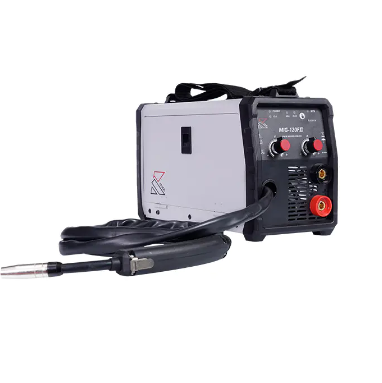When working with non-ferrous metals, particularly aluminum, precision and control are crucial for achieving clean, reliable welds. The Aluminum TIG Welder is a common choice among professionals for this reason. Known for its ability to deliver refined results, this welding method is frequently used in industries such as automotive repair, aerospace, and custom fabrication.
TIG stands for Tungsten Inert Gas welding, a process that utilizes a tungsten electrode to deliver the arc, while an inert shielding gas—typically argon—protects the weld area from atmospheric contamination. When welding aluminum, this process requires specific adjustments and considerations due to the metal's physical and chemical characteristics.
Aluminum is known for its high thermal conductivity and tendency to form a tenacious oxide layer on its surface. This oxide melts at a much higher temperature than the base metal, making it a challenge for many welding processes. An Aluminum TIG Welder overcomes this issue through alternating current (AC) mode. This setting allows the welder to alternate between cleaning the oxide and fusing the base metal during the welding process.
Another essential component of the Aluminum TIG Welder setup is the use of a high-frequency start. This feature ensures the arc begins without direct contact between the electrode and the metal, which helps preserve the electrode and improves arc stability. Additionally, maintaining a steady hand and good torch control are vital for consistent results, as TIG welding is often more technique-sensitive than other methods.
Heat control is one of the benefits that make an Aluminum TIG Welder suitable for intricate work. The welder can fine-tune the amperage, which is crucial when working on thin aluminum sheets or projects that demand minimal distortion. Foot pedal controls or fingertip adjusters are commonly used to help the operator manage the heat input dynamically during the welding process.
Filler rod selection also plays an important role in the outcome. The type of filler metal used with an Aluminum TIG Welder depends on the base material and the intended use of the finished product. Alloys such as ER4045 or ER5356 are commonly used for various aluminum welding applications. Choosing the appropriate filler ensures mechanical strength, corrosion resistance, and compatibility with the base material.
Cleanliness is another factor that affects weld quality. Before using an Aluminum TIG Welder, it is important to remove any grease, oil, or oxidation from the surface. This can be done using a stainless steel brush dedicated to aluminum or with a chemical cleaner. A clean surface helps prevent porosity and other weld defects.
In terms of equipment configuration, a high-quality torch, proper gas flow, and consistent electrode preparation contribute to the stability of the arc and the overall quality of the weld. Welders often use a water-cooled torch for prolonged or high-amperage work, especially in professional settings where an Aluminum TIG Welder is used regularly.
Training and practice are essential to developing proficiency with an Aluminum TIG Welder. Unlike some other welding techniques, TIG welding requires greater coordination and attention to detail. For this reason, many experienced welders value the level of control it offers, particularly when aesthetics and precision are important.
The Aluminum TIG Welder is a tool that supports detailed and clean metalwork when properly set up and used with care. Whether in a workshop or industrial setting, this method continues to be a preferred option for those working with aluminum components that require accuracy, strength, and visual appeal.
